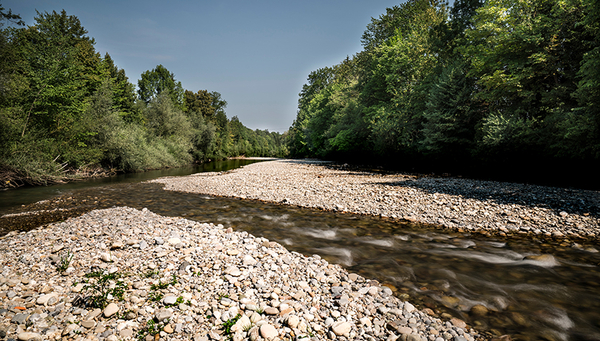News Detail
Targeting restoration measures to maximise ecological benefits
February 8, 2019 |
Today, very few Swiss rivers or streams still flow in a natural bed. Since the eighteenth century, around 15,000 kilometres of watercourses have been modified, engineered or channelised. The degradation of aquatic habitats has had a severe impact on biodiversity. To tackle this problem, the federal government has requested the cantons to restore around 4,000 kilometres of rivers and streams by 2090.
But what criteria should be used to select the river reaches to be restored? To help answer this question, scientists in Eawag’s Systems Analysis, Integrated Assessment and Modelling (SIAM) department have developed a new assessment procedure to evaluate the outcomes of different restoration strategies. “This allows you to determine where restoration would be particularly worthwhile for the ecosystem as a whole,” says ecological modelling expert Nele Schuwirth, who developed the procedure together with Peter Reichert and Mathias Kuemmerlen. “Our method also makes it possible to identify deficits in the current ecological state and to evaluate future development scenarios.”
Integrated assessment
The new procedure starts by integrating existing physical, chemical and biological assessments at the reach-scale. It is then determined how individual river reaches influence the state of the entire catchment – based on the following five spatial criteria:
- good ecological state
- near-natural fish migration potential connectivity
- resilience-supporting habitats (availability of refugia)
- low network fragmentation (potential for dispersal)
- near-natural habitat diversity
The new assessment procedure is designed not only to maximise the ecological benefits of restoration projects but also to support policymakers. As well as facilitating the coordination of various measures, it should enable synergies and conflicts with other important ecological services (e.g. flood protection and drinking water abstraction) to be taken into consideration in decision-making processes. According to Nele Schuwirth, “Transparent processes of this kind are essential for public acceptance.” The proposed method is now to be further refined in consultation with representatives of cantonal authorities.
This study was carried out as part of the EU-funded AQUACROSS project, which aims to support European efforts to protect biodiversity in Europe’s lakes, rivers, coasts and oceans.

